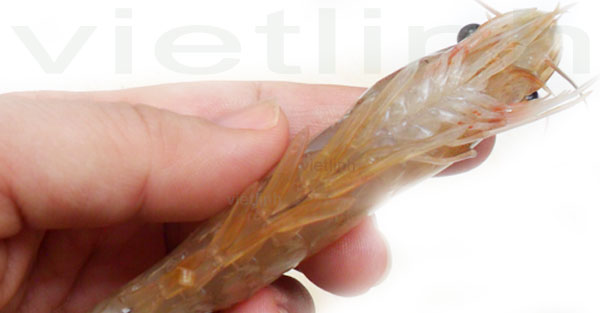2.5.3. Surface fouling diseases
* Signs:
- The creatures cling to shrimp legs, eyes, shell and create a black fuzzy layer in shrimp (can be seen clearly with microscope).
- Sicken shrimp often separates from the group, float on the water surface, swim or cling to the shore lethargically, respond slowly, reduce feed intake and cannot molt.
- As the disease progresses, the development of fouling organisms clinging to shrimp gill, making them cannot breathe, lack of oxygen and die.
* Pathogens:
Deseases are caused by fouling organisms such as:
- Pristine protozoa such as Epistylis, Vorticella, Acineta, Ephelota.
- Blue-green algae such as Spirulina subsalsa, Schizthrix calcicola; green algae Enteromorpha sp; benthic diatoms Amphora sp, Nitszchia sp.
* Preventions - treatments:
Surface fouling diseases in shrimp occur when water in ponds is dirty with a lot of algae and protozoa. Thus, the solutions below should be applied:
- Improve environmental conditions:
+ Maintain appropriate level of turbidity and stabilize algae in the ponds.
+ Increase water replacement (10-20% of water/time) to reduce fouling organisms in ponds.
+ Increase aeration to increase dissolved oxygen levels in ponds.
+ Feeding properly to avoid contamination at the pond bottoms.
+ Remove algae floating on the surface.
+ Water treatment can be conducted with microbial products to absorb toxic gas NH3, decompose organic matter, and limit the growth of algae.
- Increase resistance to shrimp with vitamin C supplements to feeds to help reduce stress in shrimp and increase their health.
- Stimulate molting: change water or use Saponin 10-15g/m3 all over the pond to help molting process uniform.
Source: Temporary process for safe brackish-water shrimp farming in areas affected by diseases in Vietnam. According to The Official Dispatch No. 10/TCTS-NTTS. January 6th, 2015. Vietnamese Directorate of Fisheries
Viet Linh 2015. Translated by Sonia Linh V.
